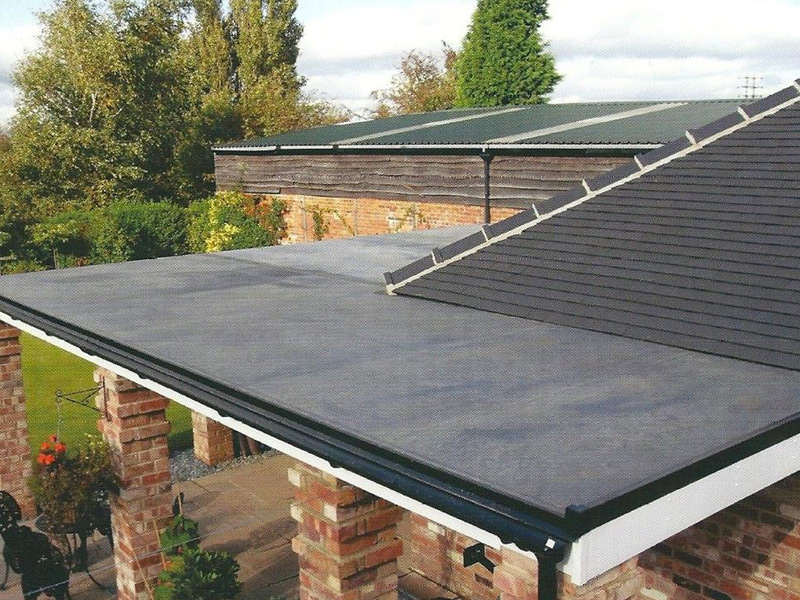
22 Dec What’s the Best Material for Flat Roof?
There are plenty of things you can put off doing when it comes to renovating your home, but repairing a leaking flat roof simply isn’t one of them.
With water coming in and potentially damaging the support joists or important internal electrical systems, there’s nothing to be done but to repair it. Alas, recent decades have seen a number of materials for flat roofs come on to the market, each professing to be the ideal replacement for your old, tired covering.
In this short guide, we’ll walk you through some of the best options in the market so you can make a smart, educated decision that benefits both your wallet, and your home. So, let’s dig in.
Built-Up Roof (BUR)
This is the more traditional of the flat roof material options, and is potentially the cheapest way to recover your roof. This is a hot tar and gravel construction that is built from three or more layers of waterproof material, alternated with hot tar and ballasted by a layer of gravel. Think of it as the ‘lasagne’ method.
This method used to rely on tar paper, but are gently moving towards more advanced materials like fiberglass membranes in order to keep water out of your home. Talking to your builder will yield more information about what materials they plan to use.
Advantages:
- Gravel acts as an excellent fire retardant.
- ‘Classic’ flat roof look.
- Inexpensive compared to other options.
Disadvantages:
- Very heavy, if you’ve not had a BUR before, you might need to strengthen your joists in order to support it. This would be a costly upgrade.
- Smelly and messy during installation.
- Not a DIY job.
Rubber Membrane
This flat roof material is made of EPDM, which is a true rubber. A durable material resembling an inner tube (like you might find on a car or bicycle), it’s been engineered to resist damage from sunlight – crucial for a flat roof, which will (hopefully) see plenty of sunlight over its 50 year or so lifespan.
Advantages:
- DIY friendly.
- Potential for a 50 year lifespan.
- Strong damage resistance.
Disadvantages:
- 20-30% more than BUR installation with another 30% cost increase if you want a light coloured coating to stop heat absorption.
Fibreglass GRP
Fibreglass has gotten something of a bad reputation as a flat roof material, but it’s completely unwarranted. Although not DIY friendly, it’s a no flame solution and offers a joint-free finish in almost any colour you could imagine. Check with your builder that they’re comfortable installing a GRP flat roof, but if they are, it’s a fine option.
Advantages:
- Comes in any colour and offers a seamless fit.
- Perhaps the most aesthetic flat roof material.
- Incredibly damage resistant.
Disadvantages:
- The most costly option for a flat roof.
- Doesn’t breathe well, so could lead to condensation issues in some homes.


Sorry, the comment form is closed at this time.